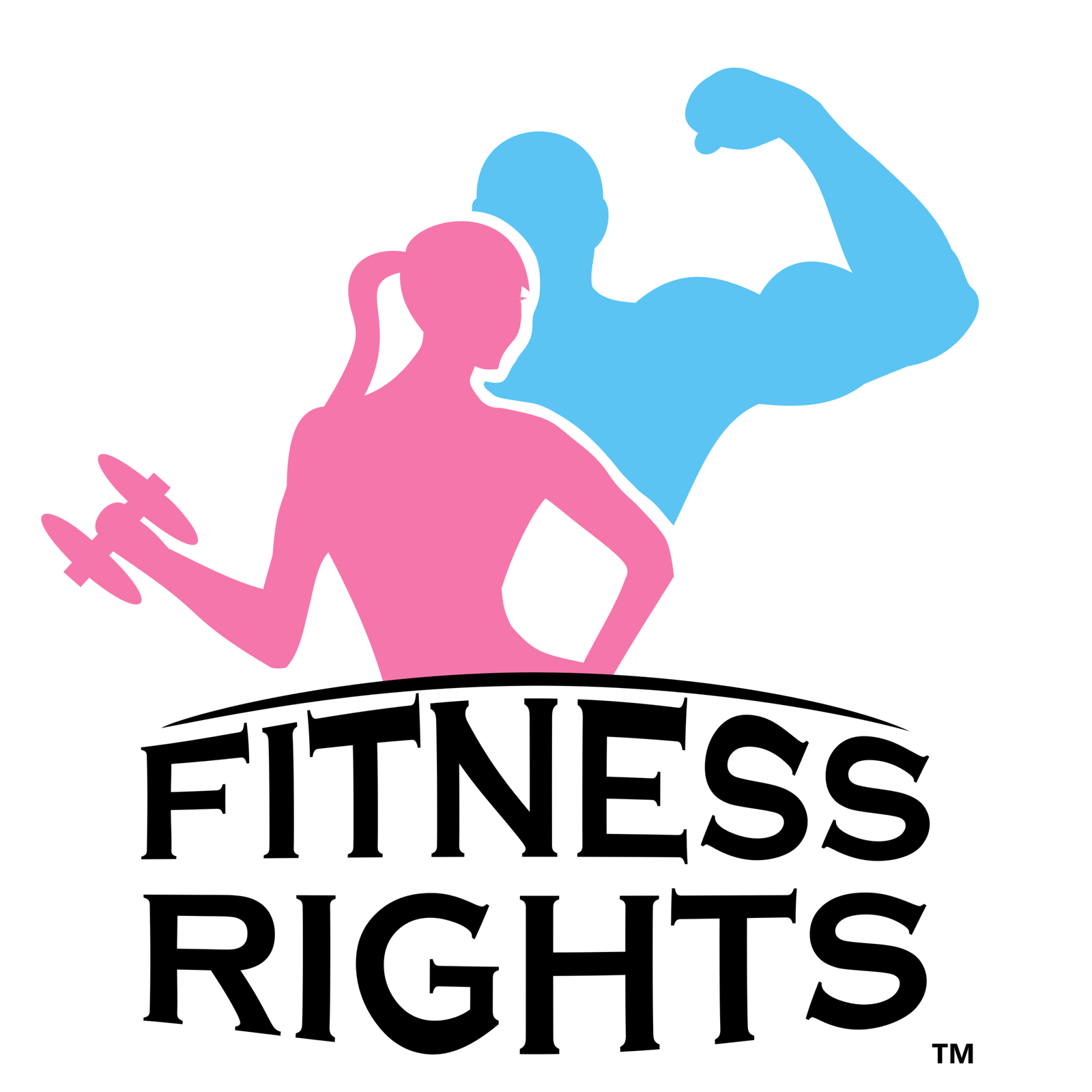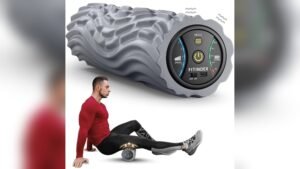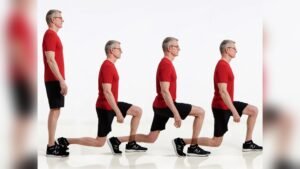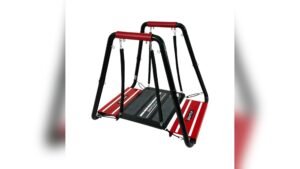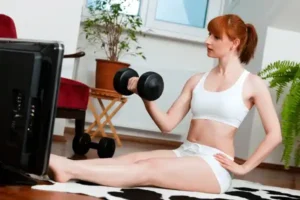If you’re struggling with back pain or sciatica, finding effective relief can feel like a constant battle. What if there was a simple tool that could help ease your discomfort right at home?
A vibrating foam roller might be just what you need. Unlike regular foam rollers, the added vibration boosts blood flow and targets deep muscle tightness, giving you a more powerful and soothing massage. In this review, you’ll discover how a vibrating foam roller can support your back pain and sciatica exercises, helping you move better and feel lighter.
Keep reading to learn which models stand out and how to use them safely for the best results.
Table of Contents
ToggleVibrating Foam Rollers Basics
Vibrating foam rollers combine traditional foam rolling with gentle vibrations. They target muscle tightness and pain, especially for back pain and sciatica. These rollers help relax muscles and improve blood flow. They are easy to use at home or in the gym.
Many people find relief from muscle stiffness and discomfort using these rollers. Understanding their basics helps choose the right one and use it correctly.
How They Work
Vibrating foam rollers use vibrations to stimulate muscles. The vibrations increase blood circulation in the targeted area. This helps reduce muscle stiffness and pain faster than regular rollers. The foam roller applies pressure to tight muscles while vibrating. This combination loosens knots and improves muscle recovery. It also helps increase flexibility in the back and legs.
Key Features
Most vibrating foam rollers have adjustable vibration speeds. This lets users choose gentle or stronger vibrations. They are usually powered by rechargeable batteries for convenience. The surface is firm but comfortable, designed to target deep muscle layers. Many models include textured patterns for better grip and massage effect. Lightweight and portable designs make them easy to carry and store.
Benefits For Back Pain
Vibrating foam rollers provide many advantages for those with back pain. They target muscle tension and stiffness effectively. Using vibration helps relax tight muscles faster than regular foam rolling. Many people find relief from chronic discomfort after a few sessions.
This tool also supports gentle stretching and better movement. It can improve your daily comfort and reduce pain flare-ups. Vibrating foam rollers are easy to use at home or in the gym.
Muscle Relaxation
The vibration helps muscles relax deeply. It reduces knots and tight spots in the back muscles. Relaxed muscles lower the pressure on nerves and joints. This can ease sharp pain and improve your range of motion. Regular use can help maintain a relaxed back throughout the day.
Improved Blood Flow
Vibration increases circulation in the muscles and tissues. Better blood flow brings more oxygen and nutrients to the injured areas. It helps speed up healing and reduces inflammation. Improved circulation also flushes out waste products that cause soreness. This makes recovery faster and less painful.
Reduced Stiffness
Vibrating foam rollers help loosen stiff muscles and joints. They improve flexibility and mobility in the back. Less stiffness means easier movement and less pain during daily activities. Using the roller regularly can prevent the back from becoming tight again. It supports long-term comfort and health.
Relief For Sciatica
Sciatica causes sharp pain along the sciatic nerve. This pain can limit movement and daily activities. Using a vibrating foam roller can help reduce this discomfort. It works by loosening tight muscles around the nerve. This section explains how to use the roller safely for sciatica relief.
Targeting The Sciatic Nerve
The sciatic nerve runs from the lower back down to the legs. Focus on the muscles near the nerve, like the glutes and hamstrings. Slowly roll these areas with gentle pressure. The vibration helps relax muscles and ease nerve tension. Avoid rolling directly on the nerve to prevent irritation.
Safe Rolling Zones
Stick to safe zones like the upper glutes and thighs. These areas support the sciatic nerve without risking injury. Roll slowly and listen to your body’s signals. Stop if you feel sharp or increased pain. Vibrations help improve blood flow and muscle recovery in these safe zones.
Avoiding Lower Back Pressure
Do not roll directly on the lower back. This area is sensitive and can worsen pain if pressured. Focus on the sides and upper back muscles instead. Use the roller to ease muscle tightness around the spine. Protect your lower back to ensure safe and effective relief.
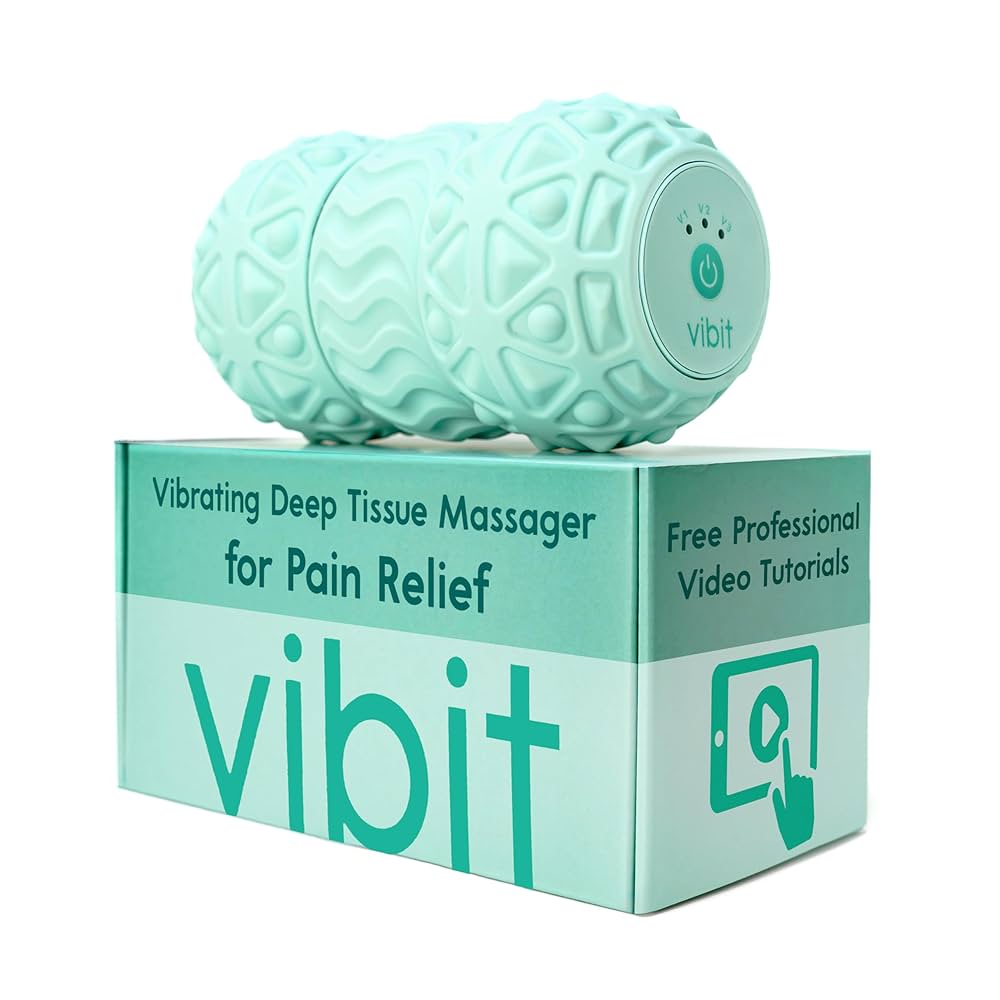
Credit: www.amazon.com
Exercise Integration
Integrating a vibrating foam roller into your exercise routine can improve back pain and sciatica relief. It supports muscle activation, recovery, and flexibility. Proper use enhances your workout effectiveness and reduces discomfort.
Pre-workout Activation
Use the vibrating foam roller before exercise to warm up muscles. The vibration increases blood flow and loosens tight areas. Spend 5 to 10 minutes rolling your back and hips gently. This prepares your body and reduces injury risk.
Post-workout Recovery
After exercise, the roller helps relax muscles and reduce soreness. Vibration speeds up muscle recovery by improving circulation. Roll slowly over sore spots for 10 to 15 minutes. This eases tension and promotes healing.
Stretching And Mobility
Combine foam rolling with stretching for better mobility. Use the roller to release knots before stretching tight muscles. This improves range of motion and decreases stiffness. Regular use supports spinal health and eases sciatica pain.
Choosing The Right Roller
Choosing the right vibrating foam roller matters for back pain and sciatica relief. The right roller can improve comfort and effectiveness during exercises. Several key factors influence your choice, such as vibration settings, size, and material. Each factor affects how well the roller meets your needs. Understanding these points helps you pick a roller that supports recovery and eases pain.
Vibration Intensity Levels
Different rollers offer various vibration intensity levels. Lower intensities suit sensitive or sore muscles. Higher settings provide deeper muscle stimulation and pain relief. Adjustable vibration lets you control the pressure and comfort. Choose a roller with multiple intensity options for a personalized experience. This flexibility helps target back pain and sciatica effectively.
Size And Portability
Size affects how easy the roller is to use and carry. Longer rollers cover more back area at once. Smaller rollers target tight spots and are easier to transport. Portable rollers fit in bags for workouts or travel. Think about where you will use the roller most. A balance of size and portability ensures convenience and comfort.
Material And Durability
High-quality materials provide firm support and long-lasting use. Foam density impacts how deep the massage feels. Durable outer layers resist wear and tear over time. Look for non-slip surfaces for better grip during exercises. A sturdy roller withstands regular use and keeps its shape. Investing in quality material protects your back and improves results.
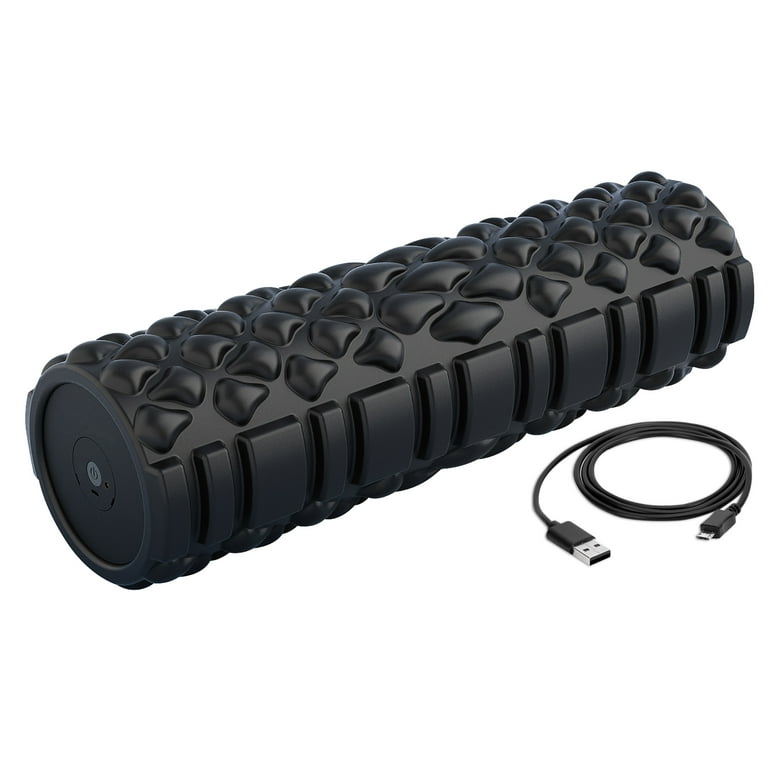
Credit: www.walmart.com
Popular Products Review
Vibrating foam rollers help relieve back pain and sciatica symptoms. They combine vibration with massage to ease muscle tension. Many models exist, ranging from simple to advanced. This review covers popular products in three price categories. It helps you find a roller that fits your budget and needs.
Budget-friendly Options
Budget rollers offer basic vibration and firm foam. They work well for beginners or light users. Prices usually range from $30 to $50. The VEVOR Vibrating Foam Roller is one popular pick. It delivers good vibration strength and has a durable build. Another option is the Nordic Lifting Vibrating Foam Roller, which provides steady vibration at an affordable price. These rollers are easy to use and portable.
Mid-range Picks
Mid-range models add more vibration levels and stronger motors. Their prices vary from $50 to $120. The PURSONIC High-Intensity Vibrating Foam Roller stands out here. It offers deep muscle relief with multiple speed settings. The CubeFit Foam Roller also has good vibration control and ergonomic design. These rollers suit people who want better pain relief and muscle recovery. They balance quality and cost well.
Premium Models
Premium rollers provide advanced features and superior build quality. Prices start around $120 and can go higher. The TriggerPoint Grid Vibe Plus Foam Roller is a top choice. It has powerful vibrations and a textured surface for targeted massage. The Therabody Wave Roller also ranks high with its smart vibration tech. These rollers deliver the best results for chronic pain and intense workouts. They are ideal for serious users seeking fast relief.
Using Vibrating Rollers Safely
Using vibrating foam rollers safely is essential to get relief from back pain and sciatica. These devices can help ease muscle tension and improve blood flow. Yet, improper use may cause discomfort or injury. Follow clear guidelines to make your sessions effective and safe.
Dos And Don’ts
Do use the roller on muscles, not directly on bones or joints. Do keep your movements slow and controlled. Do focus on tight areas but avoid overworking them. Don’t roll over your lower back or neck to prevent strain. Don’t apply too much pressure in one spot. Don’t use the roller if you feel sharp pain or numbness.
Gradual Intensity Increase
Start with the lowest vibration setting to let your body adjust. Increase intensity slowly over several sessions. Pay attention to how your muscles respond. Stop or reduce intensity if you feel pain or discomfort. Gradual progress helps avoid soreness and allows better recovery.
Avoiding Injury
Warm up before using the roller to prepare your muscles. Use proper posture and body alignment during exercises. Limit your rolling time to avoid muscle fatigue. Consult a doctor if you have serious back issues or sciatica. Rest between sessions to let your body heal and adapt.
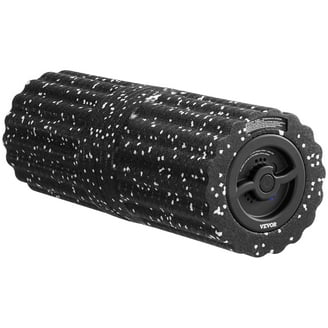
Credit: www.walmart.com
User Experiences
User experiences provide valuable insights into how vibrating foam rollers help with back pain and sciatica. These stories reveal real results and common hurdles. Learning from others guides better use and expectations.
Success Stories
Many users report reduced back pain after regular use. They find relief in tight muscles and less stiffness. Some mention improved sleep due to less discomfort. Consistency seems key for lasting benefits. Users appreciate how vibration adds gentle massage effects. Several note quicker recovery times after workouts. Positive feedback highlights better mobility and comfort.
Common Challenges
Some users face difficulty finding the right vibration level. Too strong can cause discomfort, too weak feels ineffective. Beginners often experience soreness after initial sessions. Rolling on the lower back is tricky and sometimes painful. It requires care to avoid injury. A few users mention the device’s noise as distracting. Weight and size can affect portability and ease of use.
Tips From Experts
Start with low vibration settings and short sessions. Gradually increase intensity to match comfort levels. Avoid rolling directly on the spine or bony areas. Focus on muscles around the pain, like hips and glutes. Use the roller daily for best results. Combine foam rolling with stretching and strengthening exercises. Consult a healthcare provider for personalized advice.
Frequently Asked Questions
Can A Foam Roller Help With Sciatic Nerve Pain?
A foam roller can help relieve sciatic nerve pain by loosening tight muscles and improving blood flow. Avoid rolling directly on the lower back to prevent injury. Vibrating foam rollers enhance relief by increasing circulation and reducing muscle stiffness. Use gradually to prevent soreness.
What Are Two Areas Of Your Body You Should Avoid While Foam Rolling?
Avoid foam rolling directly on the lower back to prevent spinal injury. Also, skip the neck area to protect delicate structures.
What Are The Benefits Of Vibrating Foam Rollers?
Vibrating foam rollers increase blood flow, reduce muscle soreness, improve flexibility, and speed up recovery. They activate muscles and relax tight areas effectively.
What Are The Negatives Of Foam Rolling?
Foam rolling can cause bruising, soreness, or discomfort if done too hard or long. Avoid rolling directly on joints or bones. People with certain conditions should consult a doctor first. Overuse may lead to muscle irritation or worsen injuries. Proper technique is essential to prevent harm.
Conclusion
Vibrating foam rollers provide effective relief for back pain and sciatica. They improve blood flow and reduce muscle stiffness quickly. Using them regularly can increase your flexibility and ease discomfort. Start slow and focus on areas around, not on, your lower back.
This tool supports your recovery and helps maintain muscle health. Simple, consistent use can make a real difference over time. Give your body gentle care with a vibrating foam roller.
